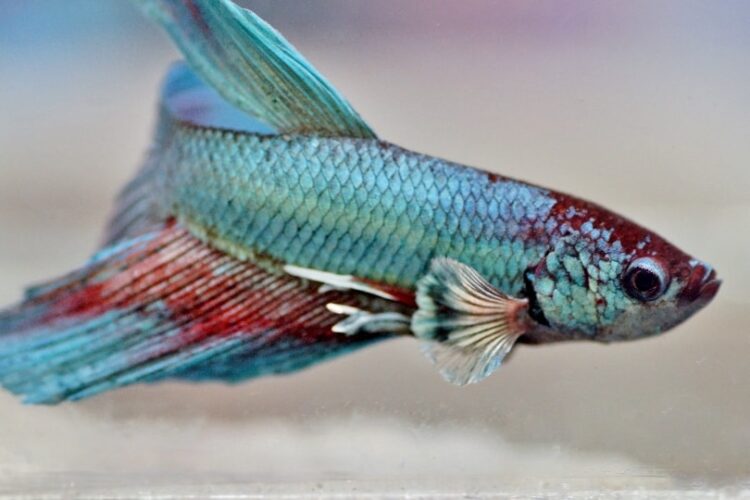As a fish enthusiast, it can be concerning to see your beloved beta fish turning white. While these vibrant and colorful creatures are known for their striking hues, a sudden change in color can indicate an underlying health issue. As an essay writer with a passion for aquatic life, I have researched the causes of beta fish turning white and how to keep them healthy and vibrant. In this article, we will explore the reasons behind this phenomenon, the link between color and health, and tips for maintaining the well-being of your beta fish.
Beta Fish: A Brief Overview
Beta fish, also known as Siamese fighting fish, are a popular choice for pet owners due to their vibrant colors and low maintenance needs. These fish are native to Thailand and Cambodia, where they live in shallow waters such as rice paddies and slow-moving streams.
Beta fish are known for their aggressive behavior towards other fish of the same species, which is why they are often kept alone in small aquariums or bowls. They have a labyrinth organ that allows them to breathe air from the surface, making them able to survive in oxygen-poor environments.
In terms of appearance, beta fish come in a range of colors including red, blue, green, purple and yellow. Their fins can be long and flowing or short and spiky depending on the breed. Overall, beta fish make for fascinating pets that require minimal care but provide plenty of entertainment.
What Causes Beta Fish to Turn White?
Beta fish are known for their vibrant and striking colors, which is why it can be concerning when they start to turn white. There are several reasons why this may happen, and it’s important to identify the cause in order to take appropriate action.
One common reason for beta fish turning white is stress. This can be caused by a variety of factors, including poor water quality, overcrowding in the tank, or sudden changes in temperature or lighting. If your beta fish is stressed, it may also exhibit other symptoms such as lethargy, loss of appetite, or fin clamping.
Another possible cause of white discoloration in beta fish is a fungal or bacterial infection. These infections can be caused by poor water quality or injury to the fish’s skin. If you suspect that your beta fish has an infection, it’s important to seek veterinary care as soon as possible.
Overall, there are several potential causes for beta fish turning white. By identifying the underlying issue and taking appropriate action, you can help ensure that your fish remains healthy and vibrant for years to come.
The Link Between Beta Fish Color and Health
As a beta fish owner, it’s important to understand that the color of your fish can be an indicator of its overall health. A vibrant, colorful beta fish is typically a healthy one, while a beta fish that is turning white may be experiencing some health issues.
One common cause of beta fish turning white is stress. If your fish is living in a tank that is too small or with other aggressive fish, it may become stressed and start to lose its color. Additionally, poor water quality can also lead to stress and discoloration in your beta fish.
It’s important to keep an eye on your beta fish’s color and behavior to ensure that it stays healthy. If you notice any changes in color or behavior, it’s best to consult with a veterinarian who specializes in aquatic animals. By taking proper care of your beta fish and keeping its environment clean and stress-free, you can help ensure that it remains healthy and vibrant for years to come.
Tips for Keeping Your Beta Fish Healthy and Vibrant
As a beta fish owner, it’s important to take steps to keep your fish healthy and vibrant. Here are some tips to help you do just that:
1. Keep the water clean: Beta fish require clean water to thrive. Make sure you change the water in their tank regularly and use a good quality filter to keep the water free of debris.
2. Provide a balanced diet: Feeding your beta fish a balanced diet is essential for their health and well-being. They require a mix of protein-rich foods like brine shrimp or bloodworms, as well as plant-based foods like pellets or flakes.
3. Maintain the right temperature: Beta fish are tropical fish and require warm water to stay healthy. Keep the water temperature between 75-80 degrees Fahrenheit using an aquarium heater.
4. Avoid overfeeding: Overfeeding can lead to health problems for your beta fish, so make sure you only feed them what they need. A good rule of thumb is to feed them small amounts twice a day.
By following these tips, you can help ensure that your beta fish stays healthy and vibrant for years to come!
Conclusion
In conclusion, beta fish are fascinating creatures that require proper care to maintain their vibrant colors and overall health. While there are various reasons why a beta fish may turn white, it is important to address the underlying cause promptly to prevent further damage or illness. By providing a clean and appropriate environment, feeding a balanced diet, and monitoring their behavior and appearance regularly, you can ensure that your beta fish remains healthy and happy for years to come. Remember, a healthy beta fish is not only beautiful to look at but also a joy to have as a companion in your home aquarium.

